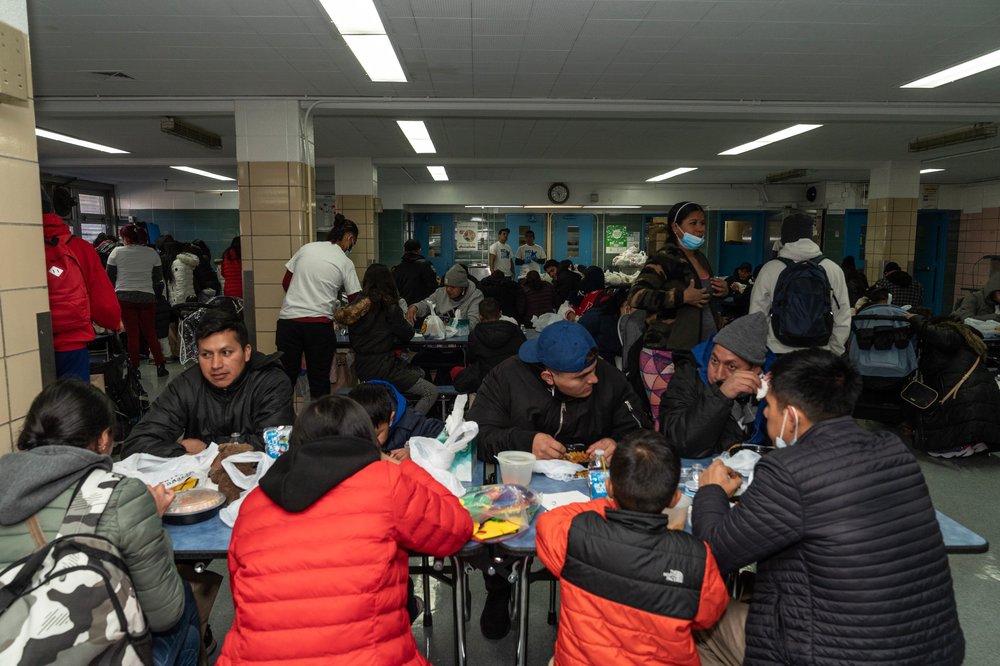NYC spends nearly $370 daily on each asylum seeker household. The sum could top $1.4B this fiscal year.
March 7, 2023, 9:26 a.m.
An administration official said the cost ‘is not sustainable.’

New York City on average spends about $363 a day on each asylum seeker household receiving services in city shelters and emergency relief centers and is on track to spend a total of $1.4 billion by the end of the fiscal year in June, Office of Emergency Management Commissioner Zach Iscol said during a recent City Council hearing.
The cost for the “asylum seeker crisis” could double to $2.8 billion in the next fiscal year, Iscol told the panel during a hearing last week. He said the city cannot maintain that support.
“The city is at the end of its resources. This is not sustainable,” Iscol said. “It's why we have asked the state, it's why we've asked the federal government for support.”
The comments came in an oversight hearing where administration officials heard councilmembers’ complaints about spotty care provided to migrants and also addressed the cost of services.
The city is at the end of its resources. This is not sustainable.
Commissioner Zach Iscol, Office of Emergency Management
More than 30,000 newly arrived migrants are staying in city-run facilities, including seven so-called Humanitarian Emergency Relief and Response centers, and 92 additional shelters opened by DHS since August.
The Federal Emergency Management Agency has dedicated $800 million to help cities across the country manage the influx of new migrants, including some $8 million for New York City. And Gov. Kathy Hochul’s proposed state budget calls for $1.1 billion to support the influx of new migrants, with $767 million to cover the shelters and HERRCs.
Councilmembers said newly arrived migrants are complaining of inadequate medical care and food quality at city homeless shelters – especially compared to the offerings at separate emergency centers.
A migrant man in City Councilmember Julie Won’s district died by suicide after not receiving requested mental health care, Won said. School principals complained to her of disease outbreaks after migrant school children didn’t receive necessary vaccinations.
Nurses and guidance counselors, Won said, told her of migrant children arriving at school with malnutrition, rapid weight loss, and diarrhea from food at the shelters.
“The people that you're caring for in both locations are the same,” Won said. “We need to have a standard of care for these people.”
The migrants are primarily from Central America; most were dispatched to New York on buses by Southern governors looking to call attention to near-record migrant crossings at the U.S.-Mexico border.
'Apples to oranges'
Agency officials said the city was providing adequate care at both kinds of facilities – shelters serving the general homeless population and emergency centers serving the migrant community exclusively.
Won said migrants share their concerns in group chats, advising each other to avoid certain Department of Homeless Services shelters. lnstead, the migrants endorse separate emergency facilities specifically opened for migrants, saying they offer better food and services
While council members complained of inadequate medical care, food, and privacy, city agency officials argued that the two systems are completely separate and shouldn’t be compared.
The city’s homeless population is diverse, with only a third being newly arrived migrants, mostly from Latin American countries, officials said. The homeless shelter system has a standard way of operating, and emergency situations by nature will require more money and a different approach. “It's comparing apples to oranges,” Iscol said.
For example, HERRCs provide on-site medical care for migrants, while DHS facilities frequently refer individuals to healthcare providers off site– which can prove difficult for migrants who lack the money for MetroCards and language capabilities to navigate the subway. But the referral system allows people to maintain care even when they leave the shelter system, and HERRCs are able to affordably provide services because they serve more people, officials said.
Regarding concerns about food, DHS has expanded delivery of milk and infant formula “out of an abundance of caution,” and has “not encountered anything systemic,” DHS First Deputy Commissioner Molly Park said.
This article was updated: It corrects that the amount spent by the city for asylum seekers is for each household; it also corrects the spelling of City Councilmember Julie Won's name in a second reference.
NYC to open new migrant relief center at Holiday Inn in the Financial District For asylum seekers looking to work in New York, desperation meets necessity Come back next year: Asylum seeker resource center in Manhattan lacks resources Texas gov busing asylum seekers to NYC may unintentionally offer them stronger safety nets